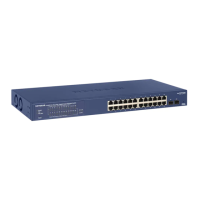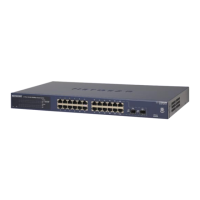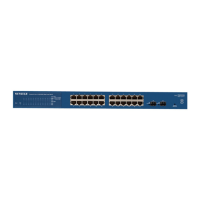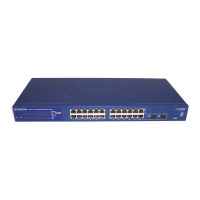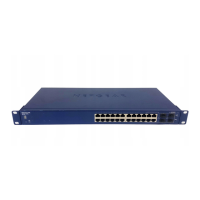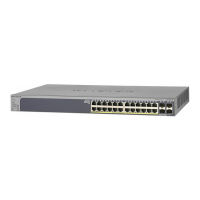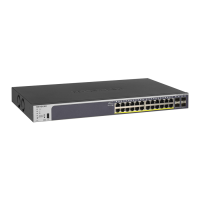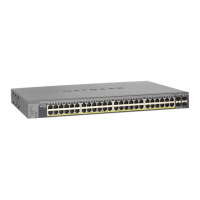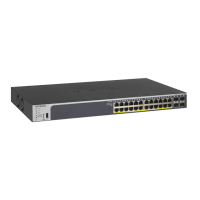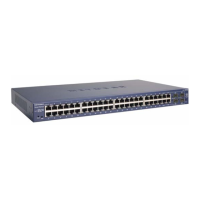Ethernet Audio Video
17
GS716T and GS724T Gigabit Smart Switches
Click Refresh to reload the page.
802.1AS
The IEEE 802.1AS standard specifies the protocol and procedures used to ensure that the
QoS requirements are guaranteed for time-sensitive applications, such as audio and video.
The IEEE 1588 Precision Time Protocol (PTP) forms the basis of the IEEE 802.1AS
standard. PTP specifies a precise clock synchronization protocol that relies on time-stamped
packets. The PTP protocol is applicable to distributed systems consisting of one or more
nodes communicating over some set of communication media. The distribution of
synchronous time information is performed in a hierarchical manner with a grandmaster clock
at the root of the hierarchy. The grandmaster provides a common and precise time reference
for one or more directly-attached slave devices by periodically exchanging timing information.
In other words, all slave devices synchronize their clocks with the grandmaster clock. The
slave devices can, in-turn, act as master devices for further hierarchical layers of slave
devices.
802.1AS Configuration
Use the 802.1AS Configuration page to enable the 802.1AS mode on the switch and
configure local clock priorities. The 802.1AS feature calculates the time delay between
devices on a given link and maintains an accurate view of a network clock.The page also
displays various global 802.1AS information.
TSpec Max Interval Frames The 32-bit unsigned Frame Rate component is used to allocate
resources and adjust queue selection parameters in order to supply the
quality of service requested by an MSRP Talker Declaration. It
represents the maximum number of frames that the Talker may
transmit in one second.
Stream VLAN Identifies the VLAN ID of the traffic stream.
Destination MAC Identifies the MAC address of the traffic stream’s destination.
Received Failure Bridge
Interface
Identifies the interface on the Bridge where the failure occurred.
Received Failure Code Identifies the code value of the failure. For more information about the
failure codes, see
Failure Code on page 13.
Received Failure Bridge MAC Identifies the MAC address of the switch where the failure occurred.
Talker Interface Identifies the interface on which the Talker is present.
Listeners Identifies the interface on which Listeners are present.
Table 2:
Field Description

